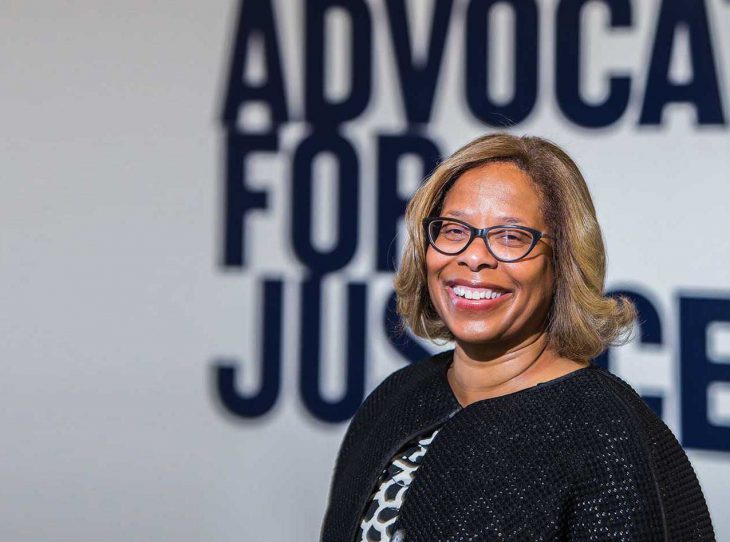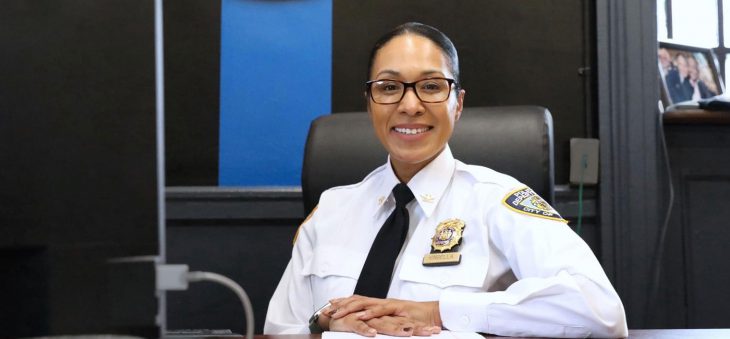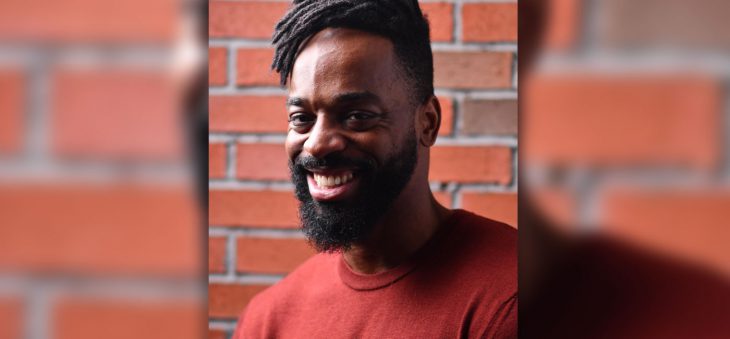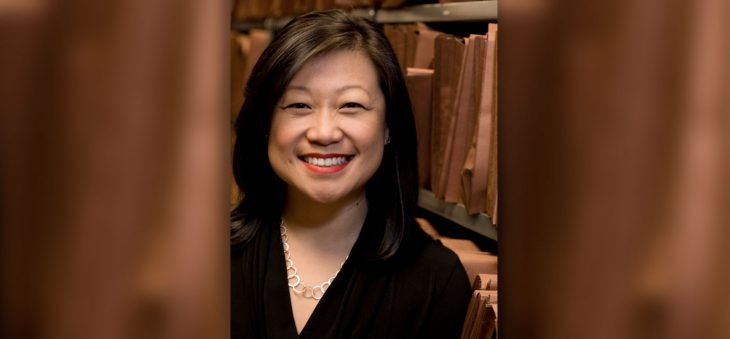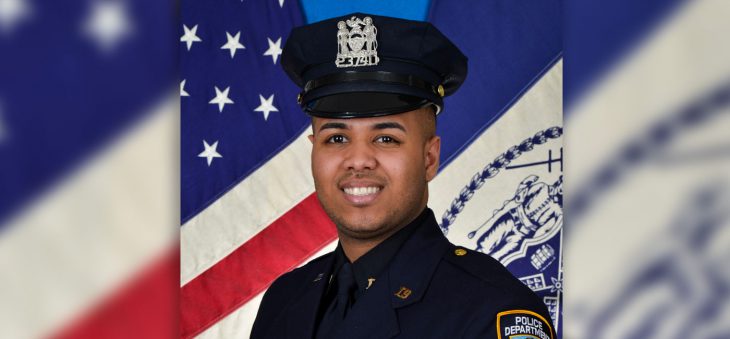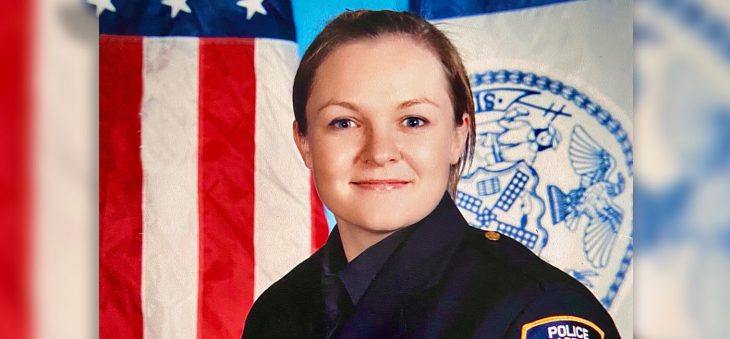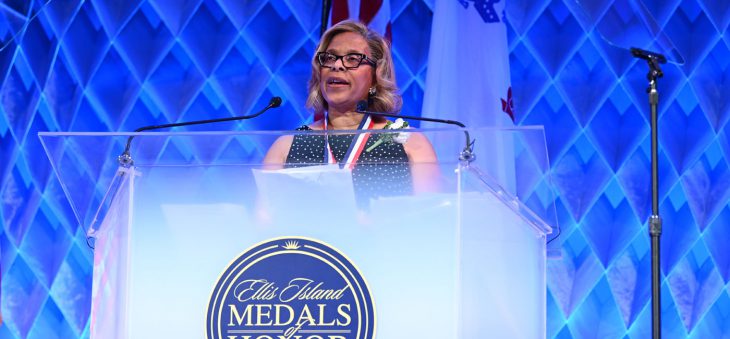Through its ties with the University of Texas at El Paso and the El Paso Project, John Jay’s Latin American and Latinx Studies Department seeks to educate, encourage, and empower our Latinx community.
By Shirley Del Valle
ON THE MORNING OF AUGUST 3, 2019, one of the safest cities in the country, El Paso, Texas, became the setting for a deadly mass shooting that specifically targeted the city’s Latinx population. Twenty-three people lost their lives—with the latest victim, Guillermo “Memo” Garcia, dying from his injuries on April 26, 2020. “We know from the shooter’s manifesto and from what he said after he was arrested, that he was targeting Mexicans; and by ‘Mexicans’, we’ve all come to understand that he meant anyone who is Latinx,” explains José Luis Morín, Chairperson and Professor of the Department of Latin American and Latinx Studies (LLS) at John Jay College. “The tragedy really hit home for us. Its impact was felt personally by my Department’s faculty, by our Latinx students, and by our institution.”
As a Hispanic-Serving Institution (HSI) that proudly boasts a nearly 50 percent Latinx student body, the tragedy hit our community hard. El Paso was the location of the LLS department’s sister institution, the University of Texas at El Paso (UTEP), where for nearly a decade, the LLS department and UTEP’s Chicano Studies department have worked together in a collaborative, global learning environment to provide students with an impactful and meaningful cross-national collegiate learning experience. “I remember, the day of the El Paso shooting, my phone started going off alerting me to what had happened,” recalls Associate Professor Isabel Martinez, Ph.D. “Immediately, I got text messages from John Jay students and alumni asking about their UTEP classmates.”
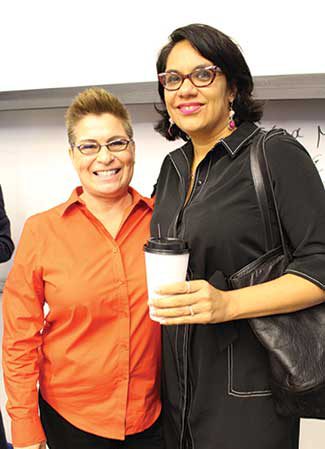
Understanding this connection and the impact the tragedy would have on John Jay students, Morín and Martinez, a native Texan, along with the rest of the department, published an open letter condemning the attack. “We wanted to express our solidarity with El Paso and our sister institution UTEP,” explains Morín. “We wanted to make it clear that we, as a department and as a College, will not forget what happened. And we promised in that open letter to follow up with action, and part of our response is to create the El Paso Project.”
Encompassing a yearlong series of events and activities, the El Paso Project demonstrates the department’s solidarity with UTEP, honors the victims of the tragedy, and advances the education and empowerment of our students by exploring the history of anti-Latinx rhetoric in the United States, while also including the forgotten history in the creation of a new syllabus. “I think we need to seize this moment and use it to provide context and a historical framework for our students and the larger John Jay community to understand how a tragedy like this can occur,” says Morín. “We need to make the historical connections, because tragedies like the El Paso massacre don’t happen in a vacuum. This is not an isolated moment. This is part of a long history of oppression that Latinx communities have faced in this country for centuries.”
CONNECTING THE DOTS
One of the first El Paso Project activities came during John Jay’s “El Paso Strong” lecture when a poster, designed by students, and symbolizing the LLS department’s connection with UTEP, was given to UTEP’s Irma Montelongo, Ph.D., Professor of Chicano Studies. Prior to the event, the entire John Jay community united to sign the poster with messages of hope and well wishes. “Once I got back on campus, we immediately put it up in the Chicano Studies Department for everyone to see,” says Montelongo. For Martinez, the care and concern from John Jay students for their UTEP counterparts wasn’t surprising. “These global learning communities create collaborations between campuses where students, who may not be able to travel or study abroad, can learn so much from each other,” says Martinez.
The global learning communities also provide students a chance to understand their Latinx identity on a more profound level. “From the very beginning we wanted our students to really think about, examine, and explore the Latinx identity and how it looks different in different regions of the country,” says Martinez. “Latinos are given this monolithic label for all sorts of purposes, and our goal is to deconstruct that for our students, disrupt the stereotypes, and help them become aware of the different ways ‘Latinidad’ is constructed, depending on where you live and what your experiences are.”
RECALLING THE FORGOTTEN HISTORY
Teaching at John Jay for 22 years, Morín has seen firsthand how this lack of knowledge regarding Latinx identity, Latinx populations, and Latinx history in the United States, can negatively impact both students and society. “We have to face the awful truth that the history of the Latinx population in the United States is rarely taught or mentioned in U.S. history books; their presence and contributions are never seen as part of the history of the U.S., regardless of how long Latinx people have been in this country,” says Morín. “Oftentimes students come to our introductory courses feeling that they come from people and cultures that are considered ‘less than.’ They feel ashamed of their own culture and identity because all they have ever seen or heard are negative Latinx depictions and stereotypes, particularly the ‘bandido’ narrative and other criminal tropes. Latinx identity has been criminalized in this country. In the 20th century, films like West Side Story popularized the idea that Puerto Rican and other Latinx youth personify a criminal element in our society. And we see it today, with a whole sub-genre of Hollywood drug cartel stories that reinforce the myth that the U.S. border is besieged by criminals from Mexico.”
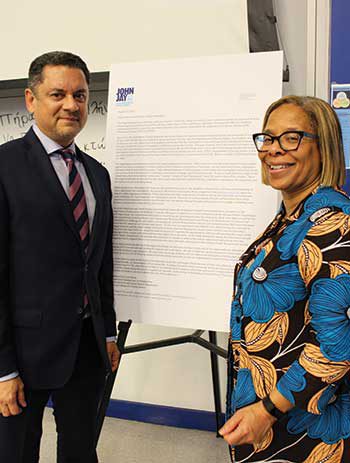
It’s these negative stereotypes that are often used as justification for brutal behavior against Latinx people, according to Montelongo. “The way Mexicans are treated after the conquest in 1846, set the tone for the taking of Latinx lands and treatment of Latinx people in the United States to this day,” says Montelongo. At the “El Paso Strong” lecture, Montelongo and Professor Nicolas Natividad, Ph.D., from New Mexico State University, broke down how the history of hate on the borderlands—the lands along the U.S.- Mexico border—and the criminalization of the Mexican identity continues to fuel the “Latinx threat” narrative today. “Between 1848 and 1920, 571 Mexicans were lynched in the United States,” Natividad explained during the presentation. “But these are just documented accounts. The real number is estimated to be closer to 3,000.” Showing newspaper clippings from the last two centuries, that referred to Mexicans as “half-civilized, semi-devils” and “invaders,” along with historical photos that captured the gasoline baths forced upon Mexicans crossing the border, Montelongo and Natividad illustrated how the dehumanization of Mexicans made it possible for institutional racism to take hold.
“What underlies the attack in El Paso is a long narrative and a long history of characterizing and claiming that the Latinx populations in the U.S. are not ‘real Americans.’ Instead, they are ‘others,’ they are criminally inclined, and they should be feared,” says Morín. “We haven’t escaped these negative stereotypes in spite of the overwhelming research that shows Latinx populations tend to be less prone to criminality because they actually tend to be very family and community-oriented, they are hardworking, and they create jobs, start businesses, and employ others.”
CREATING AN EMPOWERING CURRICULUM
So how does the LLS department hope to change the narrative? According to Morín and Martinez, by working with, empowering, and educating students. “As a Hispanic-Serving Institution it’s our obligation to overcome this dehumanization that’s been happening in every other corner of our students’ lives,” says Martinez. “Through their classroom experience, we want our students to develop a strong, healthy sense of identity.”
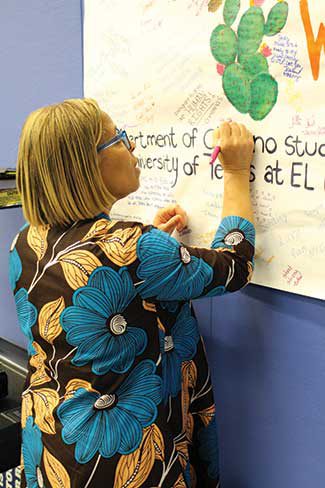
This is where the largest piece of the El Paso Project will come in. Through a faculty-student research collaborative effort, the department will create a syllabus that will include the forgotten history—such as the massacre in Porvenir, Texas in 1918 and the legacy of lynchings of the Latinx population—and the history of anti-Latinx rhetoric and its impact. “We envision the El Paso Project as an ongoing initiative. It’s going to have an online presence and we’ll post materials, news items, videos, research, and information that relate to the Latinx experience, to the El Paso tragedy, how Latinx populations are criminalized, how they’re viewed and treated as criminals, and the impact of that racial script on the Latinx community and the whole of society,” explains Morín. “We want the online information to be used as a resource for John Jay students and faculty and beyond. It should be used in classrooms to diversify our curriculum and to educate and advocate for justice, particularly at this College, a federally-recognized Hispanic-Serving Institution.”
Looking ahead, Martinez is currently in the exploratory stage of a new research project, working with Montelongo to explore the impact the current Covid-19 crisis has on Latinx populations both in El Paso and New York. “We want to look at how the crisis looks different in these two distinct places that have totally different density issues,” says Martinez. “We especially need to look at the impact on Latinx college students.”
It’s work like Martinez’s research, the global learning communities and collaborative work with UTEP, and the El Paso Project, that empower Latinx students at John Jay, and have made the College such a proud Hispanic-Serving Institution. “It’s all part of an ongoing effort to expand the availability of resources for our students so that they can continue to develop a better understanding of the Latinx experience in the U.S. and be empowered by what they’re learning at John Jay,” says Morín. “This is what we should be doing and thinking about: Who are our students and how do we serve this population of students? Because when we understand and acknowledge who they are, then we can better serve them. By understanding Latinx populations, we open the doors for understanding other student populations at the College. And building an understanding and greater appreciation of the diversity that exists at John Jay opens the door to being more successful with our entire student body.”
Photography: Andrea Dawn Clark

